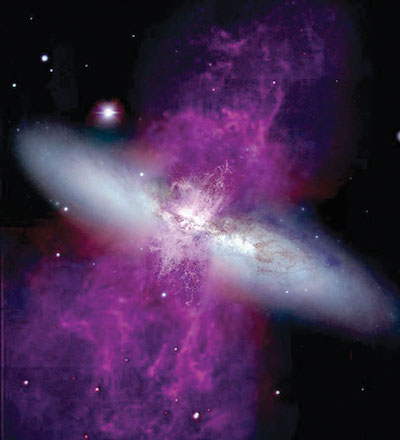Gusty, gaseous flows of FIRE

One of the key aspects of the FIRE simulations is that the explicit implementation of stellar feedback processes (photoionization, radiation pressure, stellar winds, and supernovae) naturally generates galactic winds, without adjusted parameters. Cosmological simulations previously demonstrated that powerful galactic outflows are critical to explain the observationally-inferred suppression galaxy stellar masses and the enrichment of the intergalactic medium, but most simulations to date have relied on adjusted parameters to produce galactic winds with adequate mass outflow rates and velocities.
A new paper by Muratov et al. (arXiv:1501.03155) analyzes the basic properties of galactic winds in the FIRE simulations and provides convenient analytic approximations for use in future sub-resolution models. The paper also highlights the inflow-star formation-outflow cycles that galaxies undergo in our simulations, another distinguishing relative to lower-resolution simulations with coarser interstellar medium models that predict star formation histories that are smoother in time.
Abstract: We present an analysis of the galaxy-scale gaseous outflows from the FIRE (Feedback in Realistic Environments) simulations. This suite of hydrodynamic cosmological zoom simulations provides a sample of halos where star-forming giant molecular clouds are resolved to z=0, and features an explicit stellar feedback model on small scales. In this work, we focus on quantifying the gas mass ejected out of galaxies in winds and how this material travels through the halo. We correlate these quantities to star formation in galaxies throughout cosmic history. Our simulations reveal that a significant portion of every galaxy’s evolution, particularly at high redshift, is dominated by bursts of star formation, which are followed by powerful gusts of galactic outflow that sweep up a large fraction of gas in the interstellar medium and send it through the circumgalactic medium. The dynamical effect of these outflows can significantly limit the amount of star formation within the affected galaxy. At low redshift, however, sufficiently massive galaxies corresponding to L*-progenitors develop stable disks and switch into a continuous and quiescent mode of star formation that does not drive outflows into the halo. We find inflow to be more continuous than outflow, although filamentary accretion onto the galaxy can be temporarily disrupted by recently ejected outflows. Using a variety of techniques, we measure outflow rates and use them to derive mass-loading factors, and their dependence on circular velocity, halo mass, and stellar mass for a large sample of galaxies in the FIRE simulation suite, spanning four decades in halo mass, six decades in stellar mass, and a redshift range of 4.0 > z > 0. Mass-loading factors for L*-progenitors are eta ~= 10 at high redshift, but decrease to eta << 1 at low redshift.